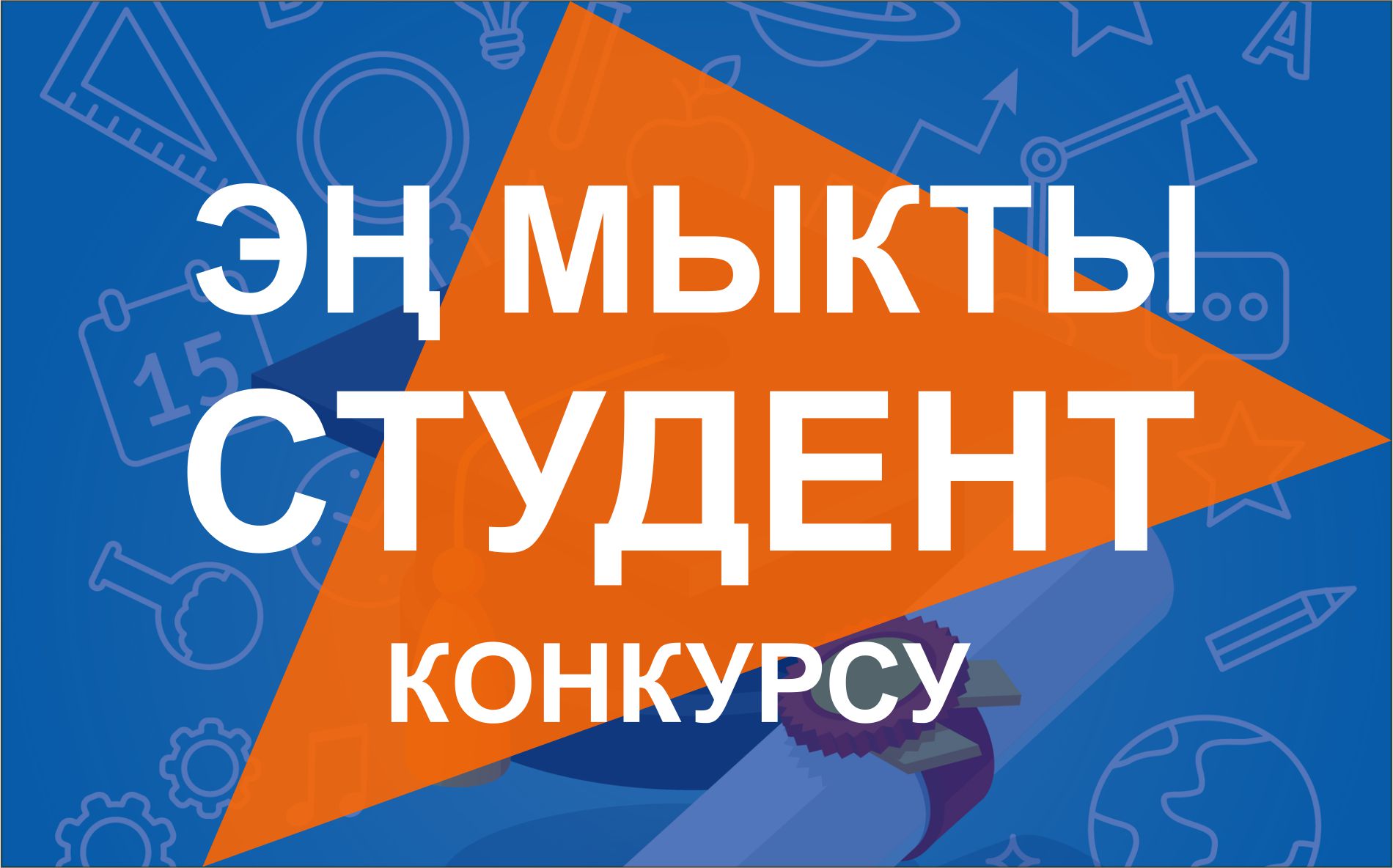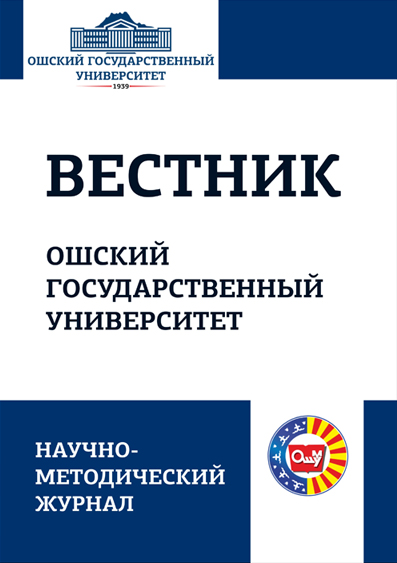
561894-EPP-1-2015-1-DE-EPPKA2-CBHE-JP
Advancing University Education in Biomedical Engineering and Health Management in Kyrgyzstan
Coordinator: WESTSACHSISCHE HOCHSCHULE ZWICKAU
Partners from Kyrgyzstan:
- Kyrgyz State Medical Academy
— Issyk-Kul State University
— Kyrgyz State Technical University
— Kyrgyz State University of Construction, Transport and Architecture
— Naryn State University
— Osh State University
— Talas State University
Project Description:
The idea of the project is based on observations of the state of the health care system in Kyrgyzstan. The existing health care system is far from optimal and education in the management and use of the latest medical equipment is weak (for example, diagnostic equipment). Even the Ministry of Health of the Kyrgyz Republic recognizes that expensive medical equipment installed in public medical institutions can not be used because staff (doctors and technical staff) lack the necessary knowledge and skills to manage and use medical equipment of Western standards. The main objective of the project is to assist interested parties in the use and management of equipment in addition to its acquisition. The goal will be achieved through the development of curricula in medical informatics and biomedical engineering with the participation of Kyrgyz partner universities.
Another goal of the project is the establishment of a medical training laboratory. The health sector in Kyrgyzstan has a limited budget, so the equipment will be provided in such a way that all partner universities have access and could use a medical training laboratory to train employees and students. In the future such training will be conducted through distance learning and telemedicine opportunities. A serious concept of future use will be created. Sustainable operation of investments in the form of equipment will be ensured through the integration of medical equipment into the health system and lifelong learning. This project aims to accumulate knowledge about the real conditions and future prospects of the health sector in Central Asia. This includes the ability to spread knowledge with a limited amount of equipment and the use of sophisticated medical equipment in practice.
573640-EPP-1-2016-1-IT-EPPKA2-CBHE-JP
Strengthening the Network on Education, Research and Innovation in Environmental Health in Asia
Coordinator: UNIVERSITA DEGLI STUDI DI MILANO (University of Milan)
Project description:
Universities realize that their prestige is closely connected with the proposed master′s and doctoral programs. However, the lack of resources and knowledge prevents the development of a systematic and appropriate set of master′s courses in environmental hygiene to train the necessary specialists in these fields. In order to overcome such limitations, master′s and doctoral programs can benefit greatly from international cooperation and from the use of modern teaching methods. The main objective of this project is to strengthen research capacity in partner countries in the field of public health, promoting a qualitative exchange of information and strengthening cooperation between universities of the European Union and Central Asia. This goal will be achieved through tuning existing doctoral programs, developing new master′s programs and using selected training approaches.
This project will improve the quality and relevance of higher education in the European and Central Asian regions and in India in the field of public health and increase their capacity to ensure the sustainability of international cooperation. Thus, a long-term international network of best practices will be created for further activities after the project is completed.
Specific objectives:
— To improve the professional competence of teachers in special areas of environmental and labor hygiene, public health;
— Review and update existing curricula for the master′s program and doctoral program on environmental and labor hygiene, public health;
— Develop new master′s programs on environmental and labor hygiene, public health adapted to local conditions;
— Introduce new pedagogical methods and quality assurance mechanisms for master′s programs;
— To create educational laboratories in universities of partner countries for postgraduate students;
— To create e-learning systems in partner countries′ universities in order to support full-time and part-time students also professionals in lifelong learning.
We expect that participants from partner countries will master innovative teaching technologies, increase academic mobility, will be a reciprocal cultural enrichment and a sustainable international partnership between EU partners and partner countries.
Partners from Kyrgyzstan:
— >- International Higher School of Medicine
— Osh State University
— Taasir-Impact
Foreign Partners:
— Kazakh National Medical University named after Asfendiyarova (Kazakhstan)
— Tajik State Medical University (Tajikistan)
— ECM Space Technologies GmbH (Germany)
— Karaganda State Medical University (Kazakhstan)
— Khujand State University (Tajikistan)
— Padmashera College Wikhe Patil (India)
— Ramakrishna University Mission Vivekanada (India)
— Semey State Medical University (Kazakhstan)
— Stichting Learning and Development in Occupational Health (Netherlands)
— TARTU ULIKOOL (Estonia)
— Technical University of Berlin (Germany)
574099-EPP-1-2016-1-IT-EPPKA2-CBHE-SP
Paving the way for interregional mobility and ensuring compliance, quality and equal access
Coordinator: University of Aquilla Project describtion:
In recent years, with the support of European cooperation programs, the EHEA-European Higher Education Area has become the starting point for a political dialogue between the EU and several regions of the world on higher education and its key role in securing employment among graduates. The growing global importance of education requires taking further measures to improve the exchange between the EHEA and the rest of the world, extending such goals and principles as the transparent recognition of education and qualifications. Within the framework of the EHEA, the introduction of ECTS (the system of accumulation and transfer of loans), the fundamental transition from a teacher-centered approach to a student-centered approach (SCL), and the use of learning outcomes and loads in curriculum development and provision as a result of a long process and experiment , Increased the transparency and readability of educational processes and facilitated the recognition of mobility from one institution to another, from one country to another, as well as successful educational mobility between EHEA universities for short-term periods of study ("credit mobility"). Recently, the acceleration of mobility between the EHEA and other regions through the Erasmus Mundus program has put "mobility" to a new and global level, showed the presence of a multitude of challenges that universities and systems face and are compelled to address. Students participating in EM projects face such challenges in recognizing study abroad, which European students and institutions were forced to address at the initial stage of mobility within Erasmus
The project proposal intends to harmonize the distribution of loans and the evaluation system in 5 areas of training in conjunction with previous projects in 23 institutes from 8 countries in 4 different regions. In addition, the EU provides a robust scheme for the transfer of loans and assessments based on previous experience of the TEMPUS partnership in Central Asia, the Caucasus, Russia and Asia and EMA2 projects in the same regions, and based on the new ECTS guide and pilot project EGRACONS.
Partners from Kyrgyzstan:
— Kyrgyz National Agrarian University named after Scriabin
Kyrgyz National University named after J. Balasagyn
— Ministry of Education and Science of the KR
— Osh State University
Foreign Partners:
— Akaki Tsereteli State University (Georgia)
— Andijan Agrarian Institute (Uzbekistan)
— University of Telecommunications (Russia)
— State University of Ilia (Georgia)
— Innovative University of Eurasia (Kazakhstan)
— Kazakh National Agrarian University (Kazakhstan)
— Hazar University (Azerbaijan)
— Khujand State University (Tajikistan)
— Kulyab State University. Rudaki (Tajikistan)
— University of Middlesex (UK)
— Ministry of Higher and Secondary Special Education of the Republic of Uzbekistan (Uzbekistan)
— Ministry of Education and Science (Kazakhstan)
— Ministry of Education and Science of Georgia (Georgia)
— Ministry of Education and Science of the Republic of Tajikistan (Tajikistan)
— Ministry of Education and Science of the Russian Federation (Russia)
— Ministry of Education of the Azerbaijan Republic (Azerbaijan)
— Mongolian University of Science and Technology (Mongolia)
— National University of Mongolia (Mongolia)
— Caucasian University (Azerbaijan)
— Samarqand Agrarian Institute (Uzbekistan)
— Kazakh Agrotechnical University named after Seifullin (Kazakhstan)
— Kokshetau State University named after Sh.Valikhanov (Kazakhstan)
— The State University named after Shota Rustaewelli (Georgia
— Siberian State University of Telecommunications and Informatics (Russia)
— University of Szeged (Hungary)
— Tajik State Commercial University (Tajikistan)
— Tajik Technological University (Tajikistan)
— - Termez State University (Uzbekistan)
— Ministry of Education and Science (Mongolia)
— University of Chemical Technology and Metallurgy (Bulgaria)
— University of Natural Sciences in Wroclaw (Poland)



















